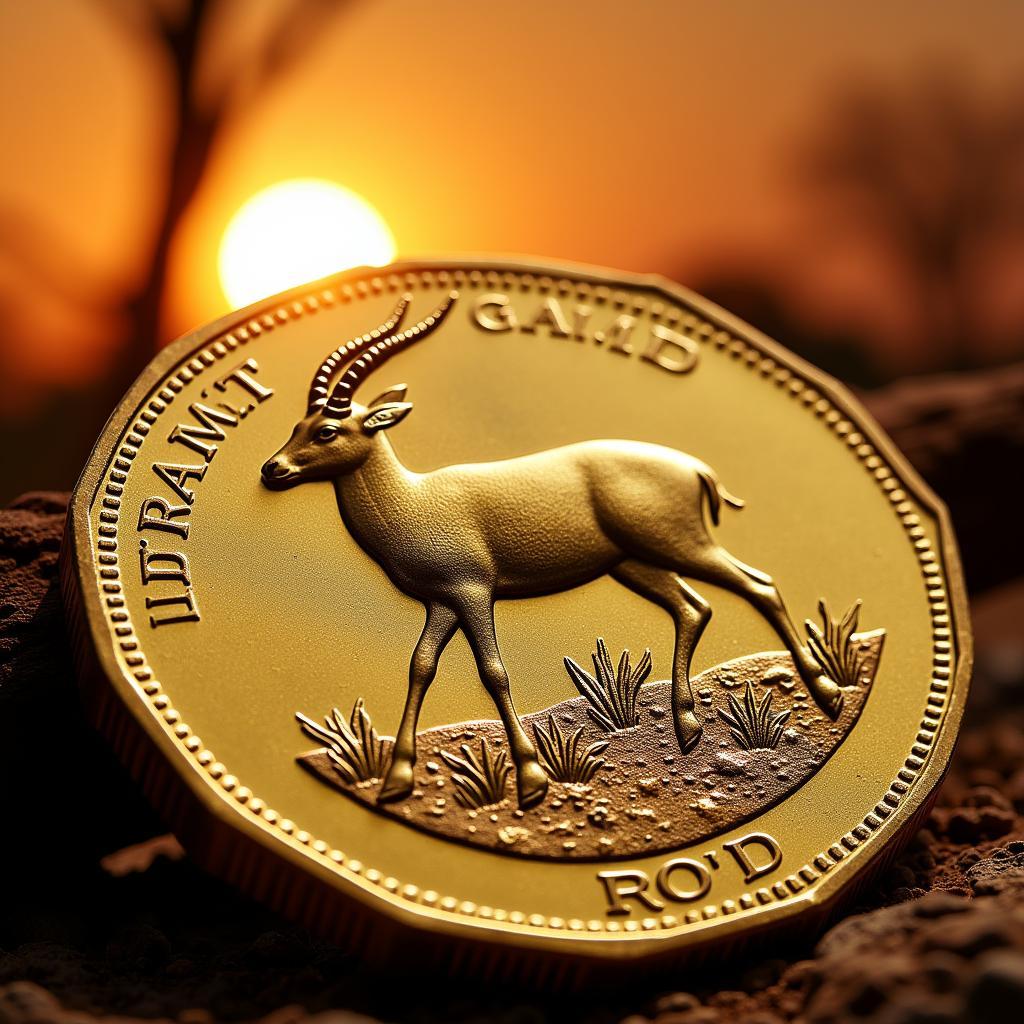Unveiling the Story Behind African Currency Icons
African currency, more than just a medium of exchange, offers a fascinating glimpse into the continent’s rich history, diverse cultures, and vibrant natural heritage. Each coin and banknote tells a story through its unique symbols and imagery. This exploration delves into the captivating world of African Currency Icons, unveiling their significance and the stories they whisper about the continent.
The Significance of Currency Icons
Currency icons are carefully chosen representations that reflect a nation’s identity and values. They can be powerful symbols of national pride, historical milestones, economic aspirations, and the natural beauty that defines a country.
 South African Rand Coin Featuring Springbok
South African Rand Coin Featuring Springbok
In Africa, these icons often extend beyond traditional emblems like national animals or historical figures. They encompass a wide range of motifs that capture the continent’s essence, including:
- Wildlife: Many African nations showcase their renowned wildlife on their currencies, highlighting the continent’s exceptional biodiversity and the importance of conservation.
- Natural Resources: From diamonds to cocoa beans, representations of key resources often appear on African currency, reflecting their contribution to economic growth and global trade.
- Cultural Heritage: Traditional art forms, historical monuments, and iconic landmarks find their place on currency, preserving and celebrating Africa’s rich cultural tapestry.
- Leaders and Visionaries: Influential figures who played pivotal roles in shaping their nations are honored on banknotes and coins, commemorating their legacy and inspiring future generations.
The Stories Behind the Symbols
Let’s journey across Africa, uncovering the stories behind some captivating currency icons:
1. The South African Rand and the Majestic Springbok:
The South African Rand features the springbok, an antelope known for its agility and grace. This symbol resonates deeply with South Africans, representing not only the country’s abundant wildlife but also the resilience and spirit of its people.
2. The Ghanaian Cedi and the Independence Arch: Ghana’s currency, the Cedi, displays the Independence Arch, a powerful symbol of the nation’s fight for freedom and self-determination. This monument, erected to commemorate Ghana’s independence from colonial rule, serves as a reminder of the country’s journey toward progress and prosperity.
3. The Botswana Pula and the Strength of the Zebra: The Botswana Pula showcases the zebra, an animal admired for its strength and resilience in the face of adversity. This icon reflects Botswana’s commitment to economic stability and growth, navigating challenges with determination.
4. The Kenyan Shilling and the Power of Unity: Kenya’s currency, the Shilling, features a diverse array of wildlife surrounding Mount Kenya, the country’s highest peak. This imagery emphasizes the importance of unity and harmony among Kenya’s different ethnic groups, working together towards a shared future.
5. The Nigerian Naira and the Beauty of Nature: The Nigerian Naira prominently displays images of agricultural products like cocoa pods and palm trees, highlighting the country’s rich natural resources and their role in its economy. These icons reflect Nigeria’s agricultural heritage and its potential for growth in this sector.
African Currency: A Window into the Continent’s Soul
Exploring the icons on African currency offers a captivating journey into the heart of the continent. These symbols go beyond their monetary value, serving as tangible representations of national identity, historical narratives, economic aspirations, and the natural wonders that define Africa.
By understanding the stories behind these icons, we gain a deeper appreciation for the rich tapestry of cultures, the resilience of its people, and the boundless beauty that Africa has to offer the world. As you hold an African banknote or coin, remember that you’re holding a piece of the continent’s soul, a testament to its past, present, and promising future.

